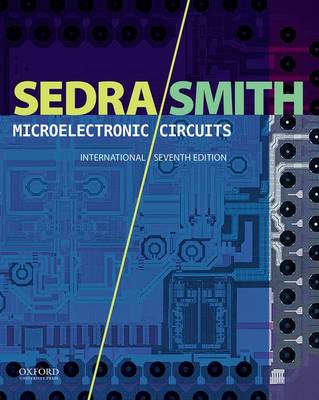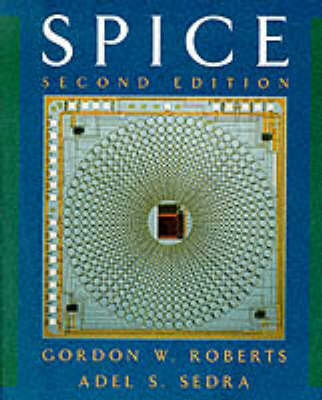The Oxford Series in Electrical and Computer Engineering
3 total works
This market-leading textbook continues its standard of excellence and innovation built on the solid pedagogical foundation that instructors expect from Adel S. Sedra and Kenneth C. Smith.
New to this Edition:
A revised study of the MOSFET and the BJT and their application in amplifier design.
Improved treatment of such important topics as cascode amplifiers, frequency response, and feedback
Reorganized and modernized coverage of Digital IC Design.
New topics, including Class D power amplifiers, IC filters and oscillators, and image sensors
A new "expand-your-perspective" feature that provides relevant historical and application notes
Two thirds of the end-of-chapter problems are new or revised
A new Instructor's Solutions Manual authored by Adel S. Sedra
New to this Edition:
A revised study of the MOSFET and the BJT and their application in amplifier design.
Improved treatment of such important topics as cascode amplifiers, frequency response, and feedback
Reorganized and modernized coverage of Digital IC Design.
New topics, including Class D power amplifiers, IC filters and oscillators, and image sensors
A new "expand-your-perspective" feature that provides relevant historical and application notes
Two thirds of the end-of-chapter problems are new or revised
A new Instructor's Solutions Manual authored by Adel S. Sedra
Today, most, if not at all, microelectronic circuit design is carried out with the aid of a computer-aided circuit analysis program such as SPICE. SPICE, an acronym for Simulation Program with Integrated Circuit Emphasis, is considered by many to be the de-facto industrial standard for computer-aided circuit analysis for microelectronic circuits, mainly because it is used by the majority of IC designers in North America today. It is reasonable to say that to
master electronic circuit design, one must also develop a fair amount of expertise in a circuit analysis program such as SPICE. It is therefore our aim in this text to describe how SPICE is used to analyse microelectronic circuits, and more importantly, outline how SPICE is used in the process of design
itself.
There is a tendency for new designers of electronic circuits to be overwhelmed by the analysis capability of a circuit analysis program such as SPICE, and ignore the thought-process provided by a hand analysis using simple models for the transistors. Experience has shown that this generally leads to poor designs because most of the design effort is spent blindly searching for ways to improve the design using a brute-foce hit-and-miss approach. It is our intention in this book to avoid this
pitfall and teach the reader what not to do with SPICE. This is accomplished by keying each example of this text to those presented in Microelectronic Circuits, Third Edition, by Sedra and Smith, where a complete hand analysis is provided. In this way, the insight provided by a hand analysis is readily
available to our readers. All examples in this text are also available on-line via the world-wide-web site http://www.macs.ee.mcgill.ca/~roberts/.
master electronic circuit design, one must also develop a fair amount of expertise in a circuit analysis program such as SPICE. It is therefore our aim in this text to describe how SPICE is used to analyse microelectronic circuits, and more importantly, outline how SPICE is used in the process of design
itself.
There is a tendency for new designers of electronic circuits to be overwhelmed by the analysis capability of a circuit analysis program such as SPICE, and ignore the thought-process provided by a hand analysis using simple models for the transistors. Experience has shown that this generally leads to poor designs because most of the design effort is spent blindly searching for ways to improve the design using a brute-foce hit-and-miss approach. It is our intention in this book to avoid this
pitfall and teach the reader what not to do with SPICE. This is accomplished by keying each example of this text to those presented in Microelectronic Circuits, Third Edition, by Sedra and Smith, where a complete hand analysis is provided. In this way, the insight provided by a hand analysis is readily
available to our readers. All examples in this text are also available on-line via the world-wide-web site http://www.macs.ee.mcgill.ca/~roberts/.
Microelectronic Circuits, Fifth Edition and Spice, Second Edition
by Adel S. Sedra, Kenneth C Smith, and Gordon Roberts
Published 25 March 2004


